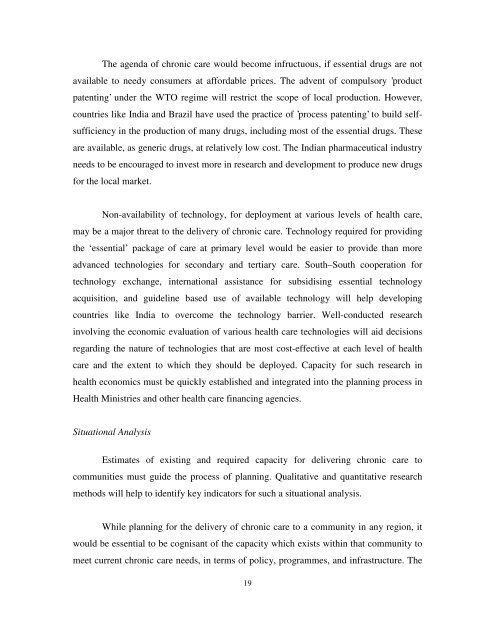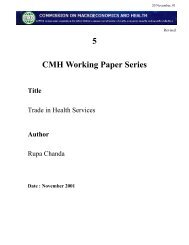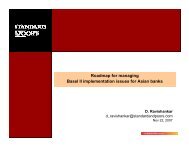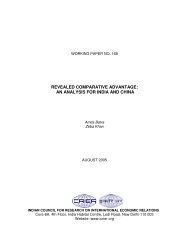prevention and control of non-communicable diseases - icrier
prevention and control of non-communicable diseases - icrier
prevention and control of non-communicable diseases - icrier
Create successful ePaper yourself
Turn your PDF publications into a flip-book with our unique Google optimized e-Paper software.
The agenda <strong>of</strong> chronic care would become infructuous, if essential drugs are not<br />
available to needy consumers at affordable prices. The advent <strong>of</strong> compulsory ’product<br />
patenting’ under the WTO regime will restrict the scope <strong>of</strong> local production. However,<br />
countries like India <strong>and</strong> Brazil have used the practice <strong>of</strong> ’process patenting’ to build selfsufficiency<br />
in the production <strong>of</strong> many drugs, including most <strong>of</strong> the essential drugs. These<br />
are available, as generic drugs, at relatively low cost. The Indian pharmaceutical industry<br />
needs to be encouraged to invest more in research <strong>and</strong> development to produce new drugs<br />
for the local market.<br />
Non-availability <strong>of</strong> technology, for deployment at various levels <strong>of</strong> health care,<br />
may be a major threat to the delivery <strong>of</strong> chronic care. Technology required for providing<br />
the ‘essential’ package <strong>of</strong> care at primary level would be easier to provide than more<br />
advanced technologies for secondary <strong>and</strong> tertiary care. South–South cooperation for<br />
technology exchange, international assistance for subsidising essential technology<br />
acquisition, <strong>and</strong> guideline based use <strong>of</strong> available technology will help developing<br />
countries like India to overcome the technology barrier. Well-conducted research<br />
involving the economic evaluation <strong>of</strong> various health care technologies will aid decisions<br />
regarding the nature <strong>of</strong> technologies that are most cost-effective at each level <strong>of</strong> health<br />
care <strong>and</strong> the extent to which they should be deployed. Capacity for such research in<br />
health economics must be quickly established <strong>and</strong> integrated into the planning process in<br />
Health Ministries <strong>and</strong> other health care financing agencies.<br />
Situational Analysis<br />
Estimates <strong>of</strong> existing <strong>and</strong> required capacity for delivering chronic care to<br />
communities must guide the process <strong>of</strong> planning. Qualitative <strong>and</strong> quantitative research<br />
methods will help to identify key indicators for such a situational analysis.<br />
While planning for the delivery <strong>of</strong> chronic care to a community in any region, it<br />
would be essential to be cognisant <strong>of</strong> the capacity which exists within that community to<br />
meet current chronic care needs, in terms <strong>of</strong> policy, programmes, <strong>and</strong> infrastructure. The<br />
19

















